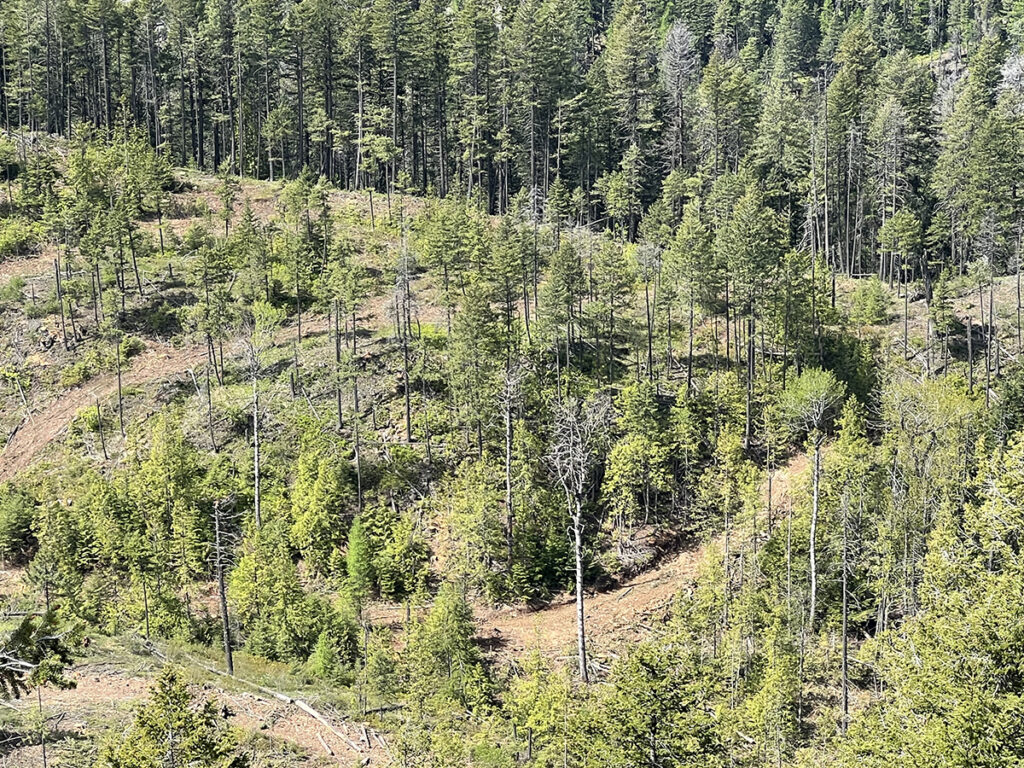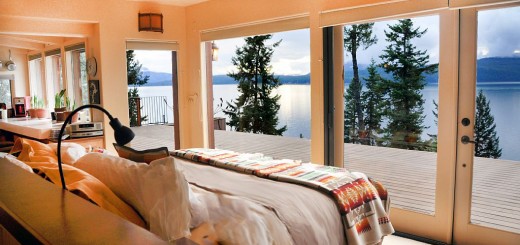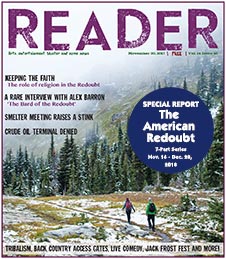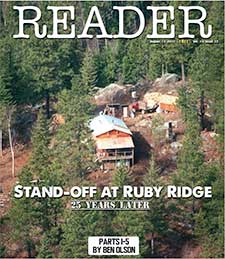Requesting Sand Lake Trail restoration
By Gabrielle Duebendorfer
Reader Contributor
Sand Lake is a popular fishing and huckleberry picking destination and the trail from the end of Forest Service Road No. 2670 off Elmira Road has been destroyed through a logging operation. Your help is needed to encourage the loggers who will be up there again within a week or two to clear it up again for the enjoyment of the public.
I recently hiked up to the headwaters of a creek nearby and was in awe of the beauty of an old cedar grove. A previous logging operation had left quite a few of the larger trees so that the area still had the feel of an old-growth glade, full with clusters of vibrantly white and pink trilliums alongside patches of snow. My Merlin bird app identified eight bird species, including the western tanager, two of whom came checking out the call recordings — bright yellow with the male having a brilliantly red head.
The harmonious beauty reminded me of Dr. Suzanne Simard’s work, which describes the importance of hub or mother trees in maintaining the complex underground fungal threads and tree root network. Her and others’ research has shown that mutual nutrient exchange and electrical communication via the hub trees are important for younger trees to survive and thrive and maintain the whole ecosystem.
As I worked myself around the mountaintop and down a ridge, I got a nice overview of this recent over-story logging operation. Over-story tree removal takes out all trees over seven inches in diameter, leaving no mature trees. I could see the darker demarcation line of older trees where logging stopped, which happens to be where this old established trail to Sand Lake used to be.
From this eagle’s eye view, the logged over area didn’t look too bad, as logging trails were interspersed with swaths of remaining younger understory trees.
Coming down the steep slope I came across a wonderful wet seep full of Indian paintbrush, shooting stars, larkspur and other flowers in the mossy pads, interrupted by swaths of destruction. It was painful to make my way farther downhill, but the persistence of nature’s beauty was reassuring.
The logging operation was an Idaho Department of Lands endowment project, which raises funds for Idaho schools. Some 30 years ago the same area was logged, and the then-IDL forester left many of the older trees along the access road as well as along the trail so that it didn’t take long for the forest to regrow. The smaller cedar grove located just as the trail dips into Sand Lake recovered beautifully.
This time around all the older trees — with one exception — were removed for maximum yield and the trail is now completely obliterated under slash. While I fully support this wonderful endowment program to support our schools, I am disappointed that neither the importance of older trees in the ecosystem nor the well-used trail to Sand Lake was honored. Both are necessary in the larger picture of health in the forest as well as our community.
The one exception was a stand of 100-year-old pines right at the beginning of the trail. That area had been a sacred place for our family for years, and both Luke from Alta (who purchased the timber) and Jordan (the forester from IDL) were gracious enough to honor that. We were reassured that the loggers would try to preserve the trail to the lake as it had been used for many years for huckleberry pickers and anglers alike. However, that was not the case.
The loggers cannot restore the cedar grove or the other ancient trees that used to line the trail, but they could clear the trail with the machinery that will be on the mountain shortly. If you are or have been using this trail in the past, please consider calling Luke at Alta — 360-219-0008 — and Jordan at IDL — 208-263-5104 — and encourage them to clear the trail for all to enjoy.
I understand that both IDL and Alta are doing best forest management practices and they truly have been very communicative with our neighborhood. I also understand that research into the communication between plants and fungi in the forest is not universally accepted. However, considering the larger interconnectivity between forest and Idaho citizens as well as the ecosystem as a whole, it would not hurt to leave a few healthy mature trees with future overstory tree removals, especially along access roads and established trails.












 Coming up this week! Don’t miss Live Music, the Summer Sampler, the Art Party, Monarch Grind, the Sandpoint Renaissance Faire, and more! See the full list of events in the
Coming up this week! Don’t miss Live Music, the Summer Sampler, the Art Party, Monarch Grind, the Sandpoint Renaissance Faire, and more! See the full list of events in the 